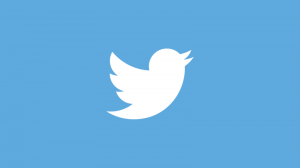If you work in HR, 2022 has been a tale of extremes. It began with companies desperately trying to woo employees with perks and flexibility but about-faced, seemingly overnight, to staff reductions and austerity budgets.
Still, that’s nothing compared to what’s coming. In 2023, I predict that we will see conflicts over issues like remote work and compensation becoming more heated as recession and inflation raise the stakes.
As employers across industries look to weather the economic downturn, it will bring a renewed focus on efficiency, foregrounding this year’s challenges over where, how, and even why we work.
As the leader of an HR analytics company that pools information from more than 25 million employees worldwide, I have a unique lens on these challenges. Here are some issues to anticipate in 2023 and insights about how companies can use data to come out on top.
Where we work: Remote, hybrid or in-person?
Conflict over where we work shows no sign of abating. At year’s end, half of the job seekers on LinkedIn wanted remote work opportunities, but only 15% of job postings were remote.
In 2023, Companies will continue to struggle to create fair, sustainable policies around remote and in-person work. Unfortunately, there’s no quick fix or single solution. Each organization will need to figure out what works best for them. In fact, the only bad decision a company can make is no decision. Leaders must decide which problem they’re solving with workplace policies, then clearly communicate the rationale.
The key is to tie remote and hybrid workplace policies to the question of effectiveness. Here’s where data can help. Leaders may require in-office or hybrid work schedules for highly connected units like HR or accounting. Grounding this decision in data removes emotion from conversations and lends credibility to arguments that in-person work translates to real business gains. For example, employers can use calendar, email and chat data to analyze a department’s “digital footprint” and better understand how much they interact with different organizational units.
On the other hand, if the data show that a team’s effectiveness is unchanged or even increased under a remote-work arrangement, a leader might decide that the operational cost savings make remote work the best option for some or all members of the team.
How we work: Inputs or outputs?
Traditionally, how we work has been measured in hours. But time on the clock is a poor indicator of performance, especially for creative roles. In fact, Stanford researchers have shown that while quantifying simple tasks, like some steps of manufacturing, can improve productivity, attempts to quantify complex work actually drives productivity down.
In 2023, a tough economy and the hands-off nature of remote work will drive employers to focus increasingly on outputs. The tension arises in what qualifies as “output.” Too many companies have defaulted to crude productivity metrics like mouse clicks, keystrokes or even time spent reading specific documents. This misses the point entirely. The only output worth measuring is what actually drives business outcomes.
While this is easier said than done, it is possible. Assessing workforce effectiveness starts with defining clear goals and desired outcomes. Then, it’s a matter of measuring progress toward those goals and ensuring efficient resource use along the way.
Here, too, analytics will play an important role. Let’s say, for example, that a company has invested significant resources in creating training materials for its sales teams. Using workforce data, company leaders can identify which training documents are actually being accessed, how frequently, and by whom. Comparing this usage against sales results can help determine which resources to invest in and which to jettison.
Why we work: Pay or purpose?
Although the Great Resignation is no longer making headlines, employees are still resigning at record numbers. Indeed, there continue to be nearly two open positions for every job seeker in the U.S.—a trend that has lasted at least a year and shows no sign of slowing.

All of that means that in 2023—even against a backdrop of sustained layoffs—companies will need to get creative about employee retention. But how do you balance plummeting payrolls with attracting and retaining top talent?
With lavish pay raises off the table for many companies during the recession, leaders should take a look at other drivers of employee satisfaction.
I’m not talking about fluffy perks like catered lunches or home office stipends. Rather, the key is updating old systems to reflect the work styles, strengths and expectations of a new generation of workers.
For example, even in austere times, employers can improve retention by doubling down on positive work experiences, such as lateral mobility, learning opportunities and growth potential, and by rallying employees around the company mission. Against a backdrop of economic turbulence, clear communication and transparency can also help foster a sense of stability and job loyalty.
Here, as well, better data can provide a window into these experiences. An internal employee survey platform, for instance, can help track perceptions around fairness and accountability, safety, communication and other key metrics. Without measuring employee experience, it’s challenging — if not impossible — to improve it.
The year ahead will be challenging, but as veterans of previous recessions know well, the storm will eventually end. Fundamentals like communication and engagement, training and development, and mission and purpose will rise to the fore in 2023 as companies seek to make the most of reduced teams.
Ultimately, weathering these rough conditions as an employer demands striking a delicate balance: getting the most out of people while also treating them as a company’s most valuable resource, not merely a cog in the machine.
Ryan Wong is an engineer turned CEO of Visier, a people analytics company.
(17)









